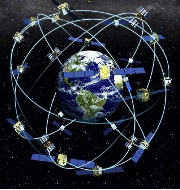China launches TanSat satellite to monitor global carbon emissions
China successfully launched TanSat, a global carbon dioxide (CO2) monitoring satellite to understand the effects of climate change.
It was launched on board of Long March-2D rocket from Jiuquan Satellite Launch Centre in northwest China’s Gobi Desert. It was the 243rd mission of the Long March series rockets.
With this, China became third country after Japan and United States to have its own satellite to monitor greenhouse gases (GHGs).
About TanSat satellite
- TanSat will thoroughly examine global CO2 levels every 16 days, accurate to at least 4 ppm (parts per million).
- It weighs 620-kg and will be located in sun synchronous orbit about 700 kms above the earth. It has three-year mission life.
- It will thoroughly monitor the concentration, distribution and flow of CO2 levels every 16 days, accurate to at least 4 ppm (parts per million) in the atmosphere.
- The satellite will help understanding of climate change and provide China’s policy makers with independent emissions data in first-hand and share it with researchers worldwide.
- It will give China a louder voice on climate change, carbon reduction negotiation and bigger say on carbon trading.
Month: Current Affairs - December, 2016


